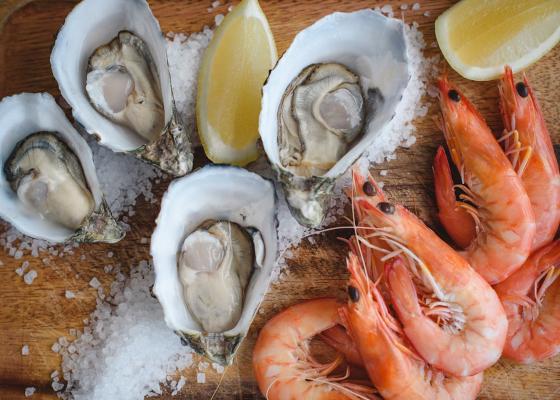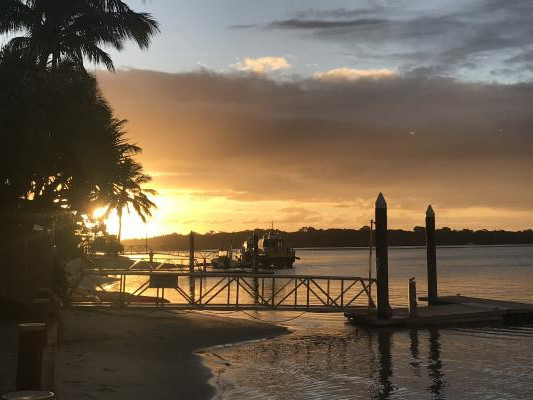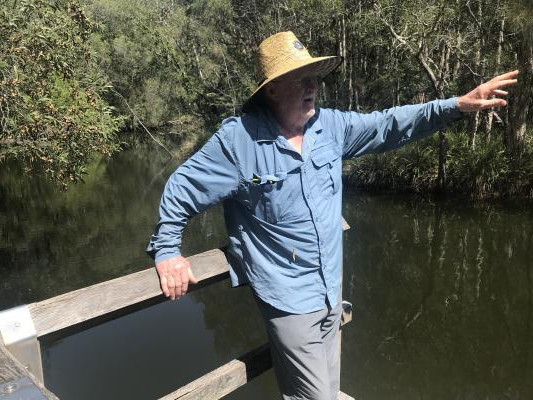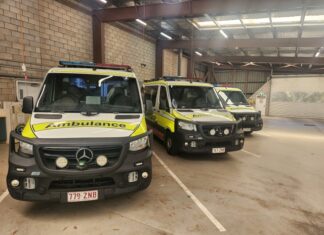The final funding instalment for the controversial Noosa River oyster reef project was announced last week, with The Nature Conservancy (TNC) Australia providing an extra $1.2 million for the restoration of shellfish ecosystems in the estuary.
And the new motto for TNC Australia’s local shell recycling program is “Shuck Don’t Chuck”.
The new contribution, funded from the $20 million TNC Australia-Australian Government Reef Builder Project, complements contributions by the Thomas Foundation and the Australian Marine Conservation Society ($1.2million) and Noosa Shire Council ($1.2 million), bringing the total allocation to restore shellfish reefs here to $3.6 million.
But while the latest funding was welcomed by local, State and Federal government, critics of the project labelled it “yet another waste of money” and claimed that the oyster reef initiative was way behind schedule and unlikely to succeed if and when it is finished. On social media some critics reprised the words of fishing identity and unofficial leader of the oyster project opposition Trevor Clarey: “$5.5 million for not one oyster, not one prawn and not one more fish than what Mother Nature would normally give us.” (The amount is derived from adding disputed rate payer contributions).
Critic John Lobb added: “The Nature Conservancy still have to gain permits to pollute the river with shell conglomerate but why does Noosa Shire Council have to partner with this long-term project?”
Mr Lobb and Mr Clarey (who applied for membership of the Noosa River Stakeholder Advisory Committee but didn’t make the cut) are both long-time opponents of the Bring Back The Fish program, designed to restore the river habitat to its former glory, but it is also known that while the new river stakeholder committee members are of like mind on many issues, there is dissent on the oyster reef project.
Committee member Dr Michael Gloster told Noosa Today: “There has been no committee discussion to date on the subject, but over the past few years, before the committee’s formation, some members have expressed different views on the oyster reef project. Since the committee’s formation, members have listened to and respected each other’s views and found common ground on the issues of river congestion, anchoring, mooring, and live-aboards. I’m hopeful we’ll find common ground on oyster reef restoration in the Noosa River.”
Oyster beds are natural structures that provide food-rich habitat for a diversity of fish species. Estuarine fishes use the beds for resting, hiding from predators, spawning and feeding on planktonic prey and smaller fishes in and around the beds.
“By restoring oyster-dominated ecosystems in the Noosa River estuary, the project will improve habitat for fish and marine life, help clean the water, and help to keep Noosa’s much-loved estuary clean and clear for locals and visitors to enjoy,” said Ms Alison Rowe, TNC Australia’s managing director.
Shellfish ecosystems were once common in the Noosa River estuary, but in the late 1800s and into the 20th century, extensive harvesting, along with changes in catchment land use practices and expanding urban development, caused their long-term decline.
Noosa Deputy Mayor Frank Wilkie welcomed the additional funding from the federal government for the science-backed project, involving three levels of government and TNC Australia. “The Noosa River is among 13 restoration sites around the country where reefs are being used to improve the abundance of marine life and water quality, now and for future generations,” he said. “It’s fantastic to see this forward-thinking Federal, State and Local Government partnership recognising the long-term economic benefit for communities that can flow from creating healthy, natural marine environments.”
Critics of the oyster reef project claim that it is a waste of money, has been delayed beyond reasonable time frames, and will never make a difference to oyster and fish stocks. Says Michael Gloster: “Talk of a significant delay is an exaggeration. My reading is that TNC is making haste slowly to ensure the design and construction for each reef is tailored precisely for each chosen location. A key lesson from earlier oyster reef trials was that in the Noosa River, one size does not fit all.”
During summer 2021 the project plans to establish oyster beds along selected shoreline fringes of Tewantin, Goat Island and Noosa Sound. Part of the restoration method uses recycled oyster shells to add to the rocky base and some shells will be seeded with oyster larvae to fast-track ecosystem development. To support this method, TNC Australia has established a local shell recycling program called Shuck Don’t Chuck. Oyster shells are collected from local seafood wholesalers and retailers, sun dried and eventually added to the rocky base of the oyster bed.
According to TNC, the most recent funding will double the number of oyster reefs to be constructed without significant increase to the rollout time. So does this mean we will soon be able to sit at oyster and wine bars along Gympie Terrace and enjoy freshly-shucked local oysters while the sun sets?
According to one river committee insider, this fantasy is one of the reasons the project’s importance is frequently misunderstood: “At this stage oyster reefs are being re-created to filter out silt and mud to bring back the river’s health and to bring back the fish. Removing oysters for human consumption would be counter-productive until this is achieved.”









